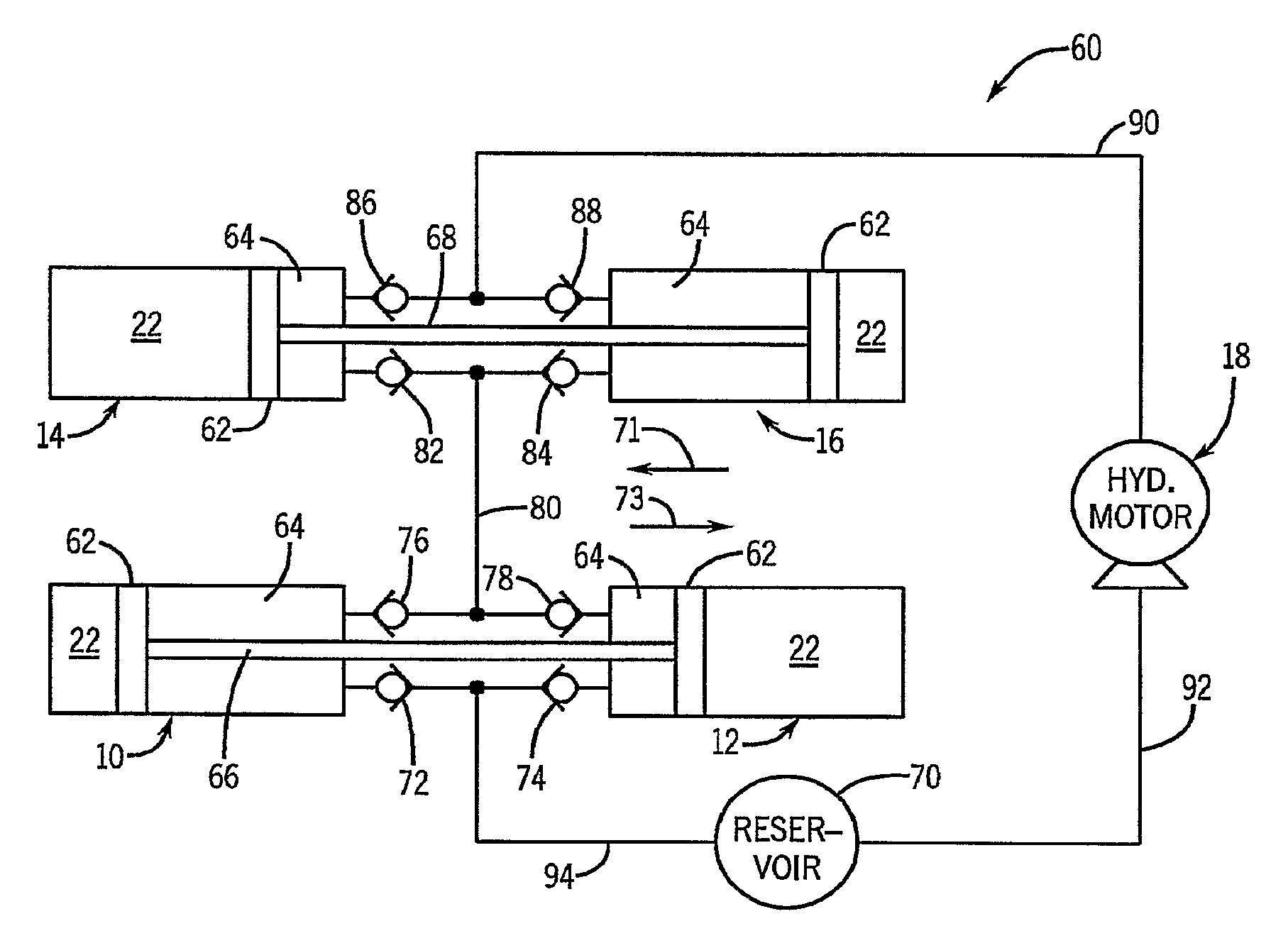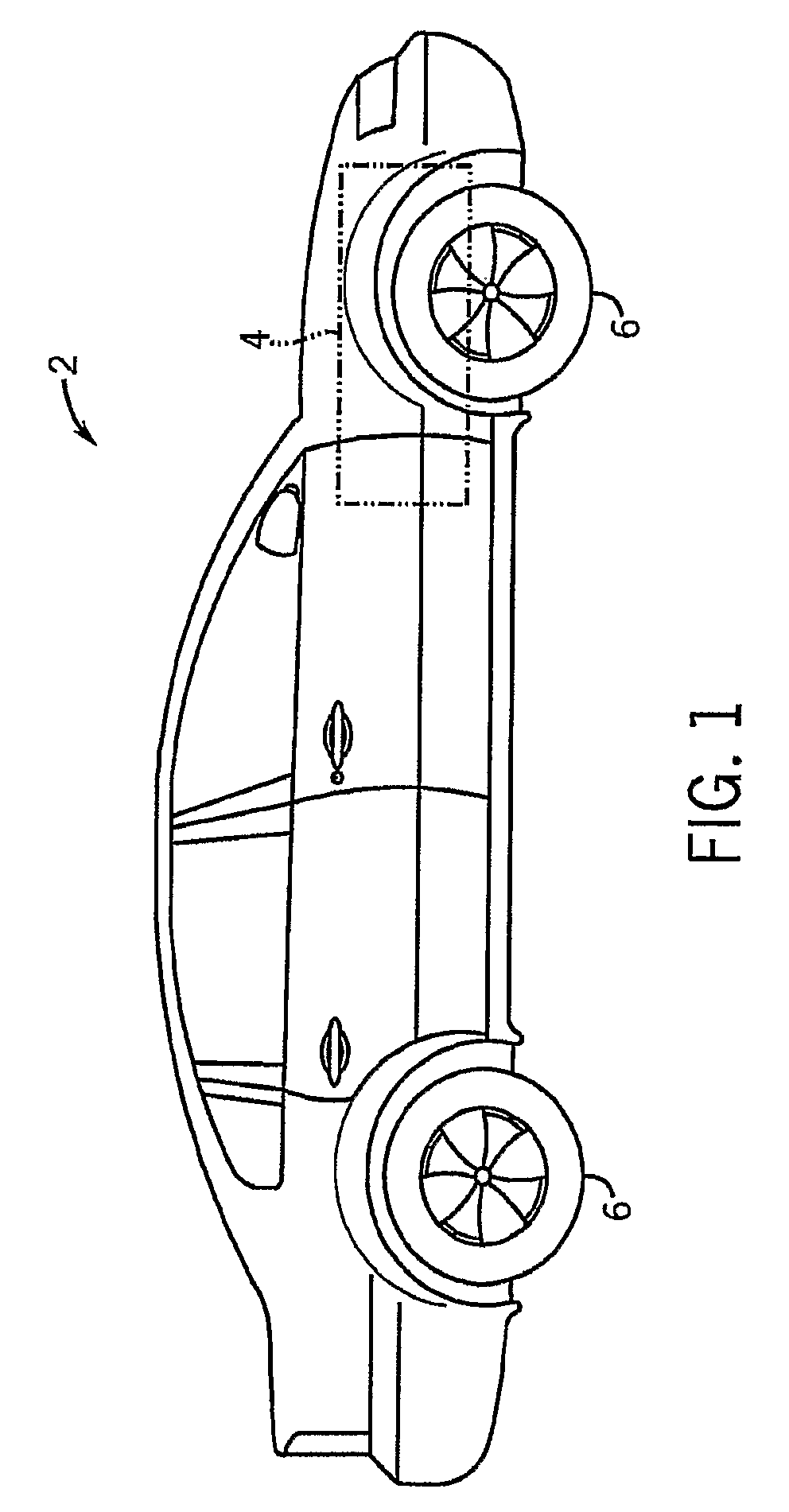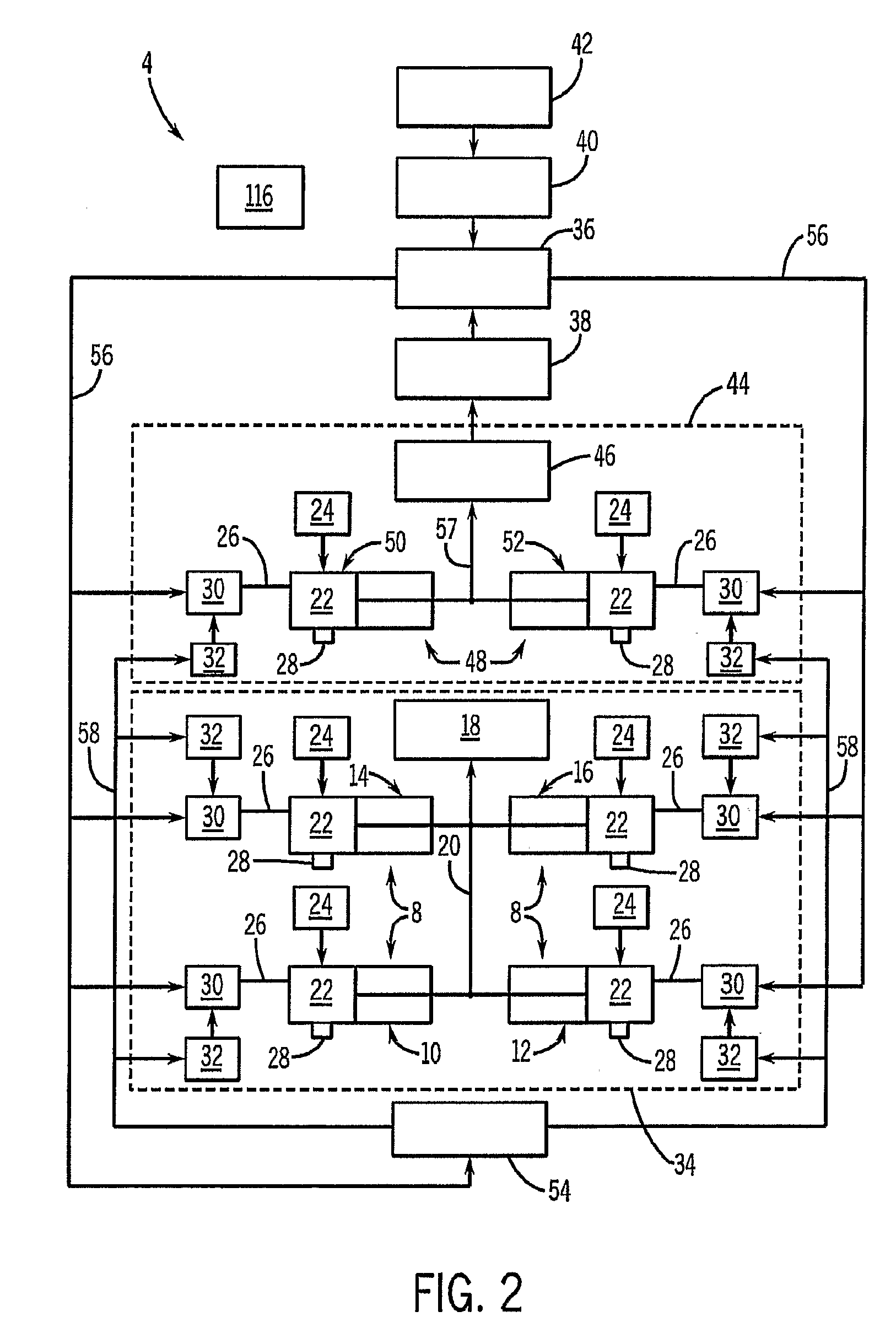Hydraulic engine
a technology of hydraulic engine and engine body, which is applied in the direction of reciprocating combination engine, electric control, instruments, etc., can solve the problems of limited engine performance suffers from several limitations, and the fuel efficiency of such engines remains limited, so as to achieve enhanced engine efficiency, increase compression ratio, and fuel-efficiency. the effect of efficiency
- Summary
- Abstract
- Description
- Claims
- Application Information
AI Technical Summary
Benefits of technology
Problems solved by technology
Method used
Image
Examples
Embodiment Construction
[0030]Referring to FIG. 1, an exemplary vehicle 2 is shown, within which can be implemented an engine 4 (shown in phantom) in accordance with one exemplary embodiment of the present invention. The vehicle 2 of FIG. 1, in particular, is shown to be an automobile capable of carrying one or more persons, including a driver, and having four wheels / tires 6 that support the vehicle relative to a road or other surface upon which the vehicle drives. Although FIG. 1 shows one exemplary vehicle, it should be understood that the present invention is applicable to a wide variety of different types of vehicles (e.g., automobiles, cars, trucks, motorcycles, all-terrain vehicles (ATVs), utility vehicles, boats, airplanes, hydrocraft, construction vehicles, farm vehicles, rideable lawnmowers, etc.), as well as other devices that do not necessarily transport people (e.g., walk-behind lawnmowers, snowblowers, pumping equipment, generators, etc.) that require or operate using one or more engines that ...
PUM
 Login to View More
Login to View More Abstract
Description
Claims
Application Information
 Login to View More
Login to View More - R&D
- Intellectual Property
- Life Sciences
- Materials
- Tech Scout
- Unparalleled Data Quality
- Higher Quality Content
- 60% Fewer Hallucinations
Browse by: Latest US Patents, China's latest patents, Technical Efficacy Thesaurus, Application Domain, Technology Topic, Popular Technical Reports.
© 2025 PatSnap. All rights reserved.Legal|Privacy policy|Modern Slavery Act Transparency Statement|Sitemap|About US| Contact US: help@patsnap.com



